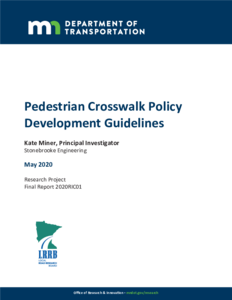Displaying results 61 - 70 of 118
Examining Optimal Sight Distances at Rural Intersections
Date Created
2019
Report Number
2019-34
Description
Design Standards for Unobstructed Sight Lines at Left-turn Lanes
Creator
Date Created
2019
Report Number
2019-32
Description
Traffic Safety Evaluation of Signalized Intersections with Retroreflective Backplates in Minnesota
Date Created
2024-01
Report Number
2024-04
Description
Criteria and Guidelines for Three-Lane Road Design and Operation
Creator
Date Created
2023-02
Report Number
2023-09
Description
Multi-city study of an engineering and outreach program to increase driver yielding at signalized and unsignalized crosswalks
Creator
Date Created
2023-03
Report Number
2023-11
Description










